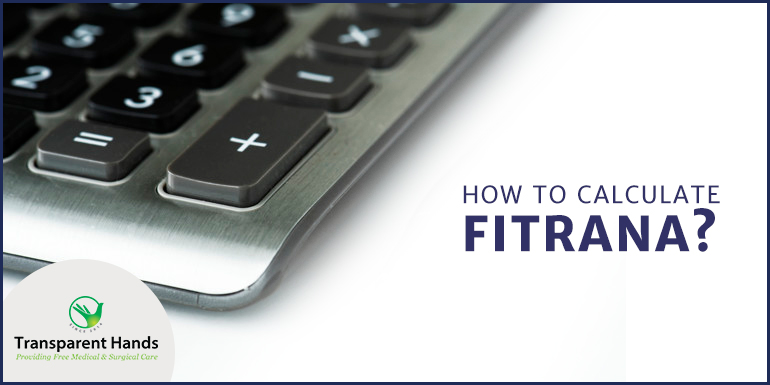How to Calculate Fitrana

For any Muslim out there, there is nothing more confusing than the calculations of Zakat-al-Fitr, or simply put, Fitrana. Just not that, throw Fidya and Kuffarah into the mix of things and boom, we have got a problem on our hands. Commonly asked questions try to explore the difference between these terms. Much of the emphasis is still on calculations through which Fitrana is calculated.
It is not that complex. But a thorough understanding is still required to calculate Fitrana. This article will serve as a guideline for you to calculate Fitrana. It also aims at explaining the difference between Fidya, Kuffarah, and Zakat-al-Fitr or Fitrana.
Fitrana
Fitrana is the charity money that each Muslim has to pay at the end of the sacred month of Ramadan, by compulsion. Consider this as the Islamic way of saying thanks for the blessed month of Ramadan. This charity money fulfills the need of those who cannot celebrate the joyous festival of Eid properly because of their unstable financial status. The money must reach the poor in time, well before Eid-ul-Fitr. Else, it won’t serve the purpose which it has to.
Hadith about Fitrana
Ibn `Abbas (May Allah be pleased with him) reported:
“The Messenger of Allah (PBUH) ordained Zakat ul Fitr to purify the fasting person from indecent words or actions and to provide food for the needy. It is accepted as Zakat for the person who gives it before the Eid prayer, but it is a mere Sadaqah for the one who gives it after the prayer”
Source: Abu Dawud &Ibn-e-Majah
One can understand the logic behind Fitrana much better if he or she reads this hadith. One further validates his or her fasting by paying a decent amount of money. It also serves to fulfill the needs of the poor, who need financial assistance to celebrate the joyous occasion of Eid.
Differences Between Zakat and Zakat al-Fitr
How is Fitrana Calculated?
The next big question. How do we calculate the Fitrana? Keep in mind that the calculations of Fitrana are completely different from Zakat. Once again, the words of Prophet Muhammad (PBUH) serve as the guiding light. Narrated by Ibn-e-Umar (RA):
“Allah’s Apostle enjoined the payment of one Sa’ of dates or one Sa’ of barley as Zakat-ul-Fitr on every Muslim slave or free, male or female, young or old, and he ordered that it be paid before the people went out to offer the ‘Id (Eid) prayer”
Source: Sahih Bukhari Vol.002, Book 025, Hadith 579
Now, one Sa’ is equivalent to four times the amount you can hold by cupping two hands together. You must not confuse yourselves, it is a measurement by volume and not weight. The price of one Sa’ of barley is nearly $2.00. That of dates starts from $1 but the really good ones go as much as $60-70. Hence, the calculations tell us that the minimum amount of Fitrana needed to be paid by one person comes around to be $2.50-3. Now, it is totally up to you whether you pay the Fitrana with whatever food you set as a reference. Some other options include raisins, cheese, rice, and corn.
Fidya and Kuffarah: How to Calculate Fitrana
Now that we are all done with Fitrana and its calculations, it would be prudent to clear any ambiguities created by different terms. Mostly, there is confusion as to what are Fidya and Kuffarah.
Fidya is paid by those people, who did not fast, without any valid reason. When these people can’t make for these missed fasts afterward, say because of illness, paying Fidya becomes obligatory for them. The cost of Fidya varies from year to year. However, it must be sufficient enough to provide a person’s daily sustenance.
What about Kuffarah then? Kuffarah is payable by those people who missed or broke a fast, without any valid reason. One still has to make up for the missed chances but with monetary compensation in the shape of Kuffarah. Regardless of how many fasts are missed, only one Kuffarah is payable per Ramadan. Costs of Kuffarah vary year to year as well.
Difference Between Zakat al-Mal and Zakat al-Fitr
Conclusion
Fitrana is paid by every member of the family, including the children. In the case of children, the head of the family pays on their behalf. It is a beautiful tradition with absolutely no limitations as to how much you should give to the poor. For underprivileged ones of society, there couldn’t have been a better source of financial assistance than the Fitrana.










Leave Your Comments